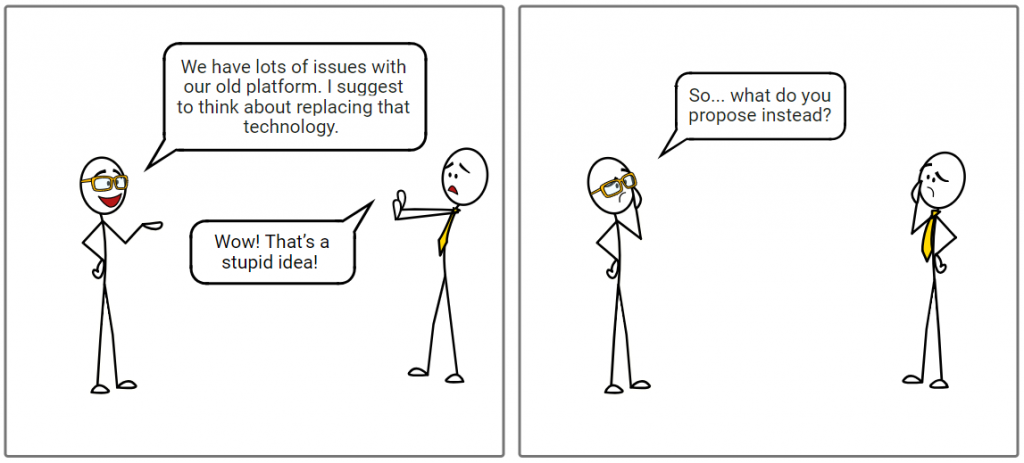
You probably actually met a few toxic people in your career. Those who were like the cancer of the workplace and disrupted your well-being, happiness and motivation at work. You avoided scheduling meetings with them, making eye contact with them and you always walked out of the break room the second they walked in.
In this article I’ve gathered the most typical symptoms of toxic individuals at work. You can’t deal with toxic people until you know who they are. It’s important to be aware of who toxic people are, no matter what kind of position you hold in your organization.
If you are a manager, you need to identify those people and react before they destroy your team. But also if you are an employee, then you cannot get caught up in their games and you have to find a way not to become a victim.
#1 A complainer who offers no solutions
You can easily find them at any kind of problem solving meetings. They appear every time there is a discussion about a new initiative or a brainstorming session to find the best ways to improve. You look for fresh ideas or you want to improve something but those people just complain a lot and negate everything.

Don’t get me wrong, questioning and complaining may be a good thing. It can lead to constructive discussions. But only if you take a “we-can-do-it” approach and you pursue improvements, not just contradict everything. Complaining just for the sake of complaining doesn’t have any value. It takes away positive energy and leads to demotivation. Such behavior can easily spread negative feelings onto other team members. It can even stop the whole team from proposing fresh ideas.
#2 An offender
Such employees are overly aggressive and use the power of their position to achieve a desired result. It’s typical for people playing an important role in the company, such as managers, leaders or experts. They openly state their disagreement with your solutions or ideas in a rather rude manner.

That kind of behavior can lower the team productivity and create unprofessional and unpleasant atmosphere. Christine Porath and Christine Pearson interviewed and surveyed 14,000 employees, managers, HR executives and CEOs from the United States and Canada [1]. As you may guess the gathered data showed the severity of the problem. The following numbers speak for themselves. The respondents said that due to incivility at work their:
#3 The helpless
Everyone understands that productivity is lower during the first few weeks after a new employee joins a team. It’s obvious that there are lots of questions at the beginning and that the team must be involved in solving the first problems. Mature teams use the best practices of how to onboard new team members which helps everyone to shorten that period.

However, in some cases the onboarding phase lasts forever. It looks like those people stay tangled in the beginning stage of a learning curve for too long. They keep asking the same questions all the time and they don’t seem to remember any of the answers. They just don’t do their homework and as a result they never become independent.
After a while such a person becomes a pain in the neck to the whole team. People start to make jokes about those helpless people and what is worse they stop helping them. It’s just too much effort without generating any real value for the whole team.
Watch out for them!
I presented just three examples of toxic coworkers. You can read more about other types of toxic coworkers but it still won’t be the full list. I guess you may encounter such individuals on a daily basis or you might have at least had the displeasure of working with them in the past.
As Christine Porath and Christine Pearson mentioned [2] toxic employees are far more toxic than we can imagine.
Targets of bad behavior become angry, frustrated, and even vengeful. Job satisfaction falls, and performance plummets. Some employees leave. But those who stay may take a bigger toll on the organization.
Thankfully, there is a strategy that helps you survive in the face of this issue. In my next article you can learn how to deal with some types of toxic coworkers.
References
[1] Joseph, Richard. (2011). The cost of bad behavior: how incivility is damaging your business and what to do about it. Prometheus. 29. 317-319. 10.1080/08109028.2011.630445.
[2] Porath, Christine & Pearson, Christine. (2009). How Toxic Colleagues Corrode Performance. Harvard business review. 87. 24-+.